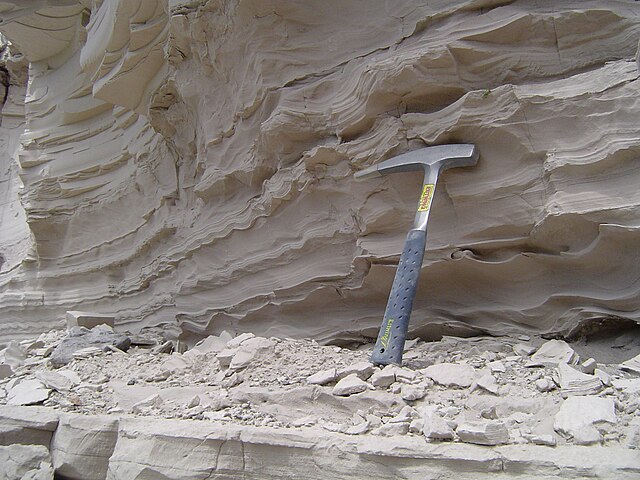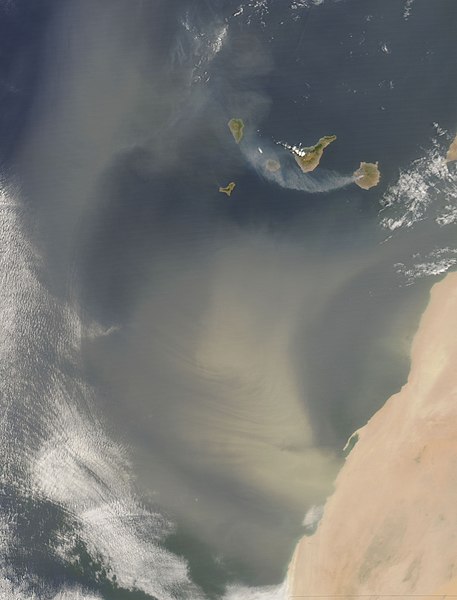Clastic rocks are composed of fragments, or clasts, of pre-existing minerals and rock. A clast is a fragment of geological detritus, chunks, and smaller grains of rock broken off other rocks by physical weathering. Geologists use the term clastic to refer to sedimentary rocks and particles in sediment transport, whether in suspension or as bed load, and in sediment deposits.
A thin section of a clast (sand grain), derived from a basalt scoria. Vesicles (air bubbles) can be seen throughout the clast. Plane light above, cross-polarized light below. Scale box is 0.25 mm.
Claystone from Montana
Conglomerate
Breccia. Notice the angular nature of the large clasts
Sediment transport is the movement of solid particles (sediment), typically due to a combination of gravity acting on the sediment, and the movement of the fluid in which the sediment is entrained. Sediment transport occurs in natural systems where the particles are clastic rocks, mud, or clay; the fluid is air, water, or ice; and the force of gravity acts to move the particles along the sloping surface on which they are resting. Sediment transport due to fluid motion occurs in rivers, oceans, lakes, seas, and other bodies of water due to currents and tides. Transport is also caused by glaciers as they flow, and on terrestrial surfaces under the influence of wind. Sediment transport due only to gravity can occur on sloping surfaces in general, including hillslopes, scarps, cliffs, and the continental shelf—continental slope boundary.
Dust blowing from the Sahara Desert over the Atlantic Ocean towards the Canary Islands
Sand blowing off a crest in the Kelso Dunes of the Mojave Desert, California
Deep, eroding glaciofluvial deposits alongside the Matanuska River, Alaska
Sand ripples, Laysan Beach, Hawaii. Coastal sediment transport results in these evenly spaced ripples along the shore. Monk seal for scale.








